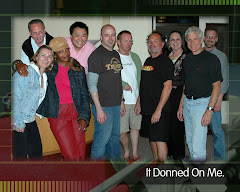Friday, July 11, 2008
3G
Eager Buyers Line Up For iPhone 3G
By Jefferson Graham, USA TODAY
Here we go again. Friday is iPhone 3G day across the globe. Lines had already formed Thursday at some Apple Stores, including New York and San Francisco, where hard-core fans wanted to be first on the block with the new iPhone when it went on sale at 8 a.m. at Apple (AAPL) and AT&T (T) stores in the USA.
"It's ironic," said Kelly Croy, a Ohio middle school teacher who picked up his new iPhone on Friday. "I was waiting on line to get my iPhone last year, and this year I'm still waiting — but at home." Croy said he was "very surprised and disappointed Apple didn't anticipate this."
Lines extended around the block Friday morning at Apple's 5th Avenue store in Manhattan. Piper Jaffray analyst Gene Munster counted 540 people on line, slightly below the throngs who queued up at the same location to purchase the first iPhones last year.
"It does feel like there's less buzz," Munster said.
But as the day wore on and customers waited to have their phones activated, lines in some locations grew longer than during last year's iPhone launch. Customers were waiting in line for five hours at he Apple Store at the Los Angeles Grove shopping center, for example; customers were waiting up to six hours at the Century City Los Angeles Apple Store.
Apple has sold 6 million first-generation iPhones since the launch slightly more than a year ago. The new version is cheaper — $199, from an original $599 — and accesses the Internet faster over partner AT&T's speedier, third-generation network.
Munster predicts that Apple will have a big opening weekend with sales of 450,000 phones worldwide in the next three days. That compares with 320,000 sold on the iPhone's first weekend in June 2007.
Apple's new online App Store — with about 500 new programs for the iPhone and iPod Touch — opened earlier than expected Thursday morning. For Apple, the bigger impact of the new release will be felt in other countries, say tech analysts. The iPhone is set to launch in 17 new countries, with 70 total by the end of the year.
"Right now, in the U.S., Apple has access to 70 million AT&T subscribers," says Charles Wolf, an analyst with Needham & Co. "But the carriers abroad bring it to north of 700 million subscribers. The numbers suggest that international sales could far exceed U.S. sales."
Munster says this launch won't be as big an event in the USA as last year's. "But globally, you've got so many countries … this is really huge for Apple," he says. Consumers in Canada and Mexico got access to the iPhone for the first time Friday. Lines had formed at Apple Stores in such places as New Zealand and Japan. In New Zealand, the iPhone sells for more than $400. In Japan, Italy and Hong Kong, the phone sells for around $300.
By Friday morning, the line at the Softbank Corp. store in Tokyo had grown to more than 1,000 people, and the phone quickly sold out."Just look at this obviously innovative design," Yuki Kurita, 23, said as he emerged from buying his iPhone, carrying bags of clothing and a skateboard he had used as a chair during his wait outside the Tokyo store. "I am so thrilled just thinking about how I get to touch this."
While the iPhone is less expensive in the USA than it had been, consumers will spend more in the long run. Beyond phone charges, users need a data plan to access the Internet, and exclusive carrier AT&T has raised the price of that to $30 from $20 a month.
"People will use a lot more data" with the faster speed of the iPhone, "so that's fair," says Apple CEO Steve Jobs.
Meanwhile, despite all the hype for the iPhone, and raves from critics, Wolf says sales of the first-generation iPhone have been a disappointment. "It's been more talk than substance," he says. "I thought they'd sell a lot more phones." Wolf had expected sales of 8 million phones to date, instead of the 6 million Apple has reported.
But with a lower price in the USA and faster speeds, Wolf thinks Apple will see dramatic sales increases. He predicts sales of 8 million this year, growing to 29 million in 2009, which he says will make substantial contributions to Apple's bottom line.
Subscribe to:
Post Comments (Atom)












No comments:
Post a Comment